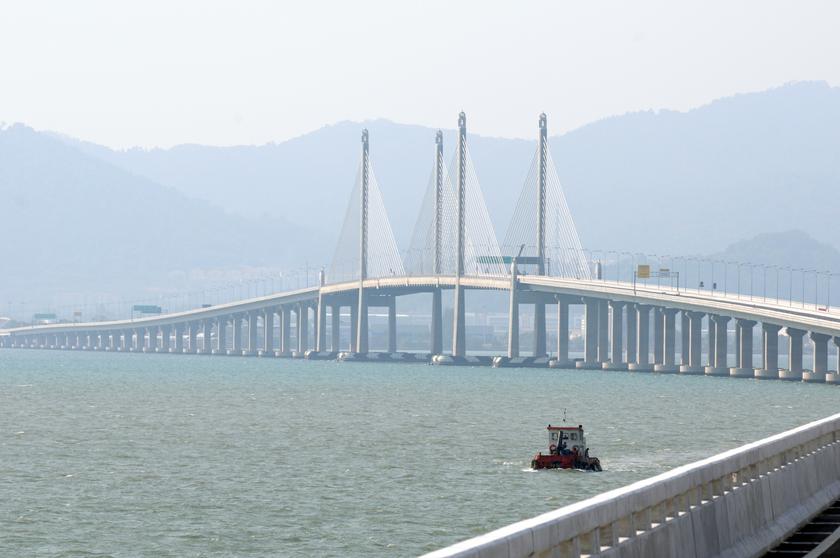GEORGE TOWN, March 1 — Ten years ago, Batu Kawan was not a place many people, including those living in nearby districts or on the island, would visit.
Its wide expanse of land used to be covered in oil palm plantations with hardly any housing estates, commercial areas or industrial zones except for the Batu Kawan Stadium and a few seafood restaurants – spill-over businesses from the nearby seafood town of Bukit Tambun.
Then, two high tech industrial parks were set up: the Penang Science Park and the Batu Kawan Industrial Park.
But interest in this quiet backwater really hit home in 2008, when construction of the Second Penang bridge started in earnest.
With its completion and opening today, many believe the bridge – the longest in Southeast Asia at 24km – will be the catalyst that finally open the southern part of mainland Penang and its periphery towns.
But what will the opening of the RM4.5 billion bridge linking it to Batu Maung on the island actually bring?
1. Decentralisation of Penang island
For the longest time – from when Penang was under colonial British rule – the island half has been the heart and soul of the state, with its beaches, hills, factories, well-preserved history and vibrant contemporary culture pulling in tourists and investors.
Aside from being known as the Silicon Valley of Malaysia due to its strong electronics and electrical manufacturing sector, the island is also where the Unesco world heritage site of George Town is located while the mainland side of the state lags behind like the proverbial stepchild.
Now, the focus has finally shifted and soon, there will be a balance of developments between the island and mainland so the latter will no longer be the “inferior” side of the state.
At long last, Penang is no longer going to be defined only as “an island” but as a state with two sides to it connected by its two iconic bridges and the ferry service.
Which leads to what is on the minds of most people – housing.
2. Does this mean, Batu Kawan houses will be more expensive?
Property in this area used to fetch less than half the price of any property on the island.
For example, a single storey terrace house on the island could cost upwards of RM800,000 per unit but across the narrow strait, such row houses could cost only RM200,000 per unit.
Has it shot up alarmingly to match the prices of properties on the island especially with the completion of the bridge?
No.
There is yet to be multimillion-ringgit houses like on the island, but prices are expected to slowly climb within the next five to 10 years pending the completion of planned developments there.
Also, the new state housing policy, that frowns on property speculation, has played a role in dampening property “flipping” by investors which had indirectly controlled the prices from shooting up too fast.
So, will it be the next successful industrial zone equivalent to the island’s long established E & E manufacturing sector?
3. High Tech Industrial Zone and satellite township
The state has been moving away from its electronics and electrical (E & E) manufacturing sector with the setting up of the Penang Science Park and the Batu Kawan Industrial Park that focuses on industries other than E & E.
The take-up rate for industrial land there had been more than encouraging. It actually spiralled above the state’s expectations.
This led the state government to embark on an aggressive acquisition exercise to acquire land to the north and south of the Penang Science Park.
It is also aggressively acquiring lands to the north, south and east of the Batu Kawan Industrial Park.
Big names like Robert Bosch, Boon Siew Honda, VAT Manufacturing Malaysia and Aviatron are already there with more in the pipeline.
On top of that, Batu Kawan is slotted to be the next satellite township, perhaps even bigger than the mixed development and industrial area of Bayan Baru on the island.
Other than industrial parks, the state government is also promoting it as the next best place for mixed developments of commercial districts, housing estates and education hub to complement its Bandar Cassia affordable housing project.
The most notable is the recent announcement by Swedish furniture company, Ikea, of its intention to its second Malaysian outlet in Batu Kawan, the first and only store now located in Petaling Jaya, Selangor.
In the deal, Aspen Vision and Ikano Pte Ltd, the Ikea franchise company for Malaysia, Singapore and Thailand, will develop Ikea to anchor a shopping mall, business centre and residential area covering 98 hectares of land.
It will not be the only shopping mall because there is also a RM1 billion Penang Designer Village project consisting of a premier outlet shopping mall, hotel and mixed developments by PE Land Sdn Bhd, the operator of Sarawak’s premier mall, The Spring Mall.
Batu Kawan may also be the next education hub, with the University of Hull and KDU slotted to set up campus there.
With these exciting developments in the pipeline, the focus sure is on Batu Kawan now and maybe, once these developments are completed, it will once and for all shed its “inferiority” to become a shining, thriving township.





















